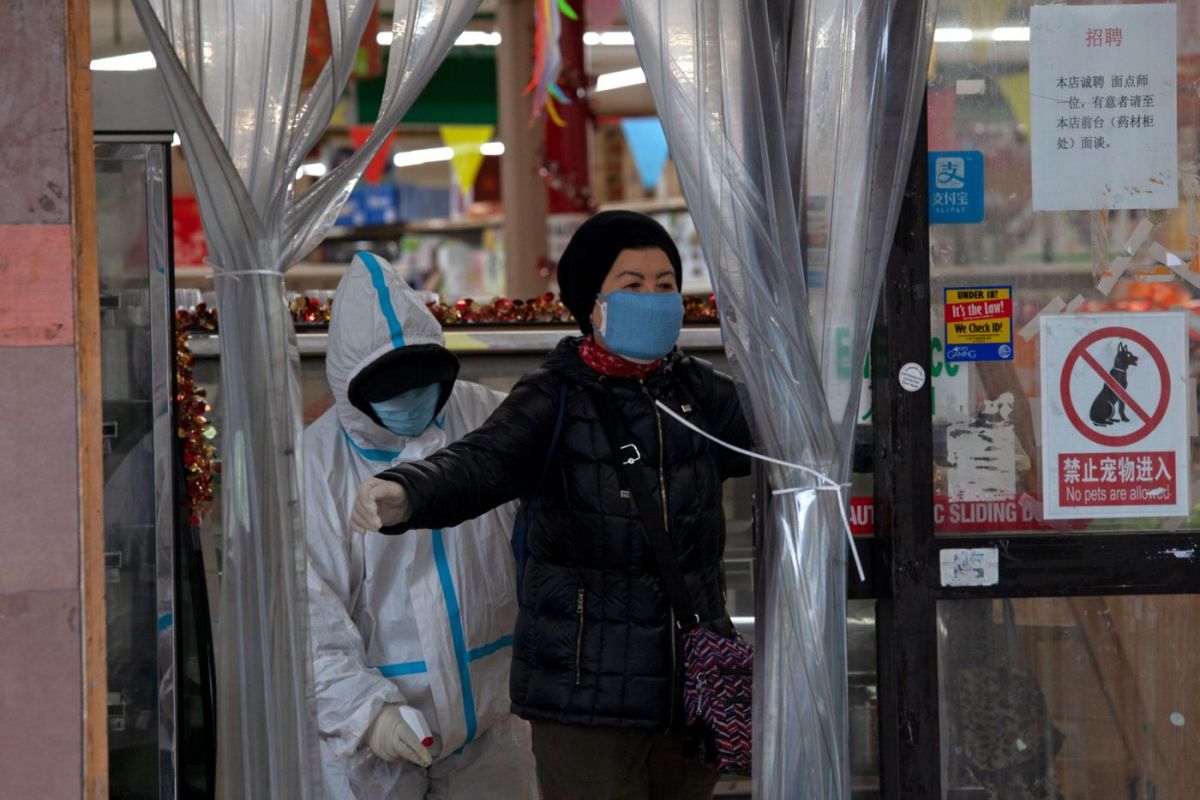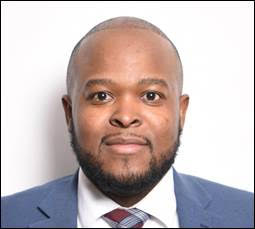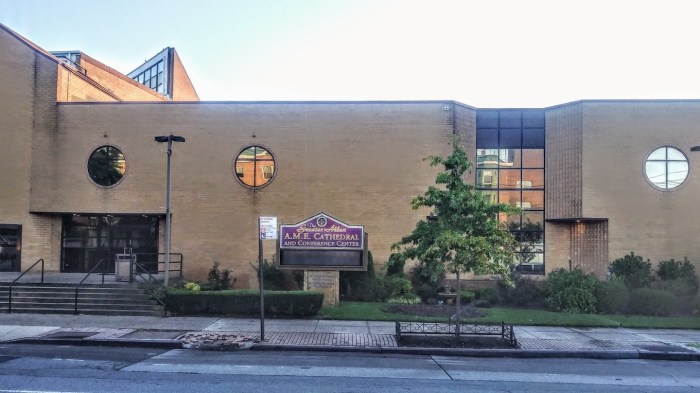BY ANN CHOI AND JOSEFA VELASQUEZ, THE CITY. This story was first published on May 3, 2020 by THE CITY.
On paper, Flushing and Corona, two bordering neighborhoods in Queens, are more alike than different.
Separated by two highways and Flushing Meadows-Corona Park, the working-class neighborhoods have a large share of foreign-born residents. Corona is predominantly Latino, while Flushing is home to a large Asian community.
Both are high-density areas with similar socioeconomic profiles. They’re linked by the usually crowded No. 7 train.
Nearly half of workers in both neighborhoods are employed in food service, construction, cleaning and transportation — jobs that New York State has deemed essential through the pandemic.
Residents of both places typically have household income below the Queens median and a similar share of people who lack health insurance, as measured by the U.S. Census Bureau. And almost half of apartments and houses in both areas have more than one occupant per room, the Census definition of crowded.
Yet when it comes to COVID-19, the differences between the neighborhoods couldn’t be more stark.
Corona emerged as the early epicenter of the outbreak in New York City and shows no sign of slowing down. Meanwhile, the rate of test-confirmed positive cases of the virus among Flushing residents has remained among the lowest in the five boroughs.
Early Measures
The divergent impact of the virus in two similar neighborhoods suggests that low incomes and poor access to health care alone do not predicate the virus’s damage, public health experts say.
The divide between Corona and Flushing also highlights a striking possibility: that early measures many Flushing residents, workers and businesses took to protect themselves — during crucial weeks while city and state government held back — may have made a difference.
“I was very aware when the virus first started in China,” said a Flushing nurse, originally from China, who spoke with THE CITY on the condition of anonymity.
“I knew we’d be hit hard if America didn’t prepare,” she said.
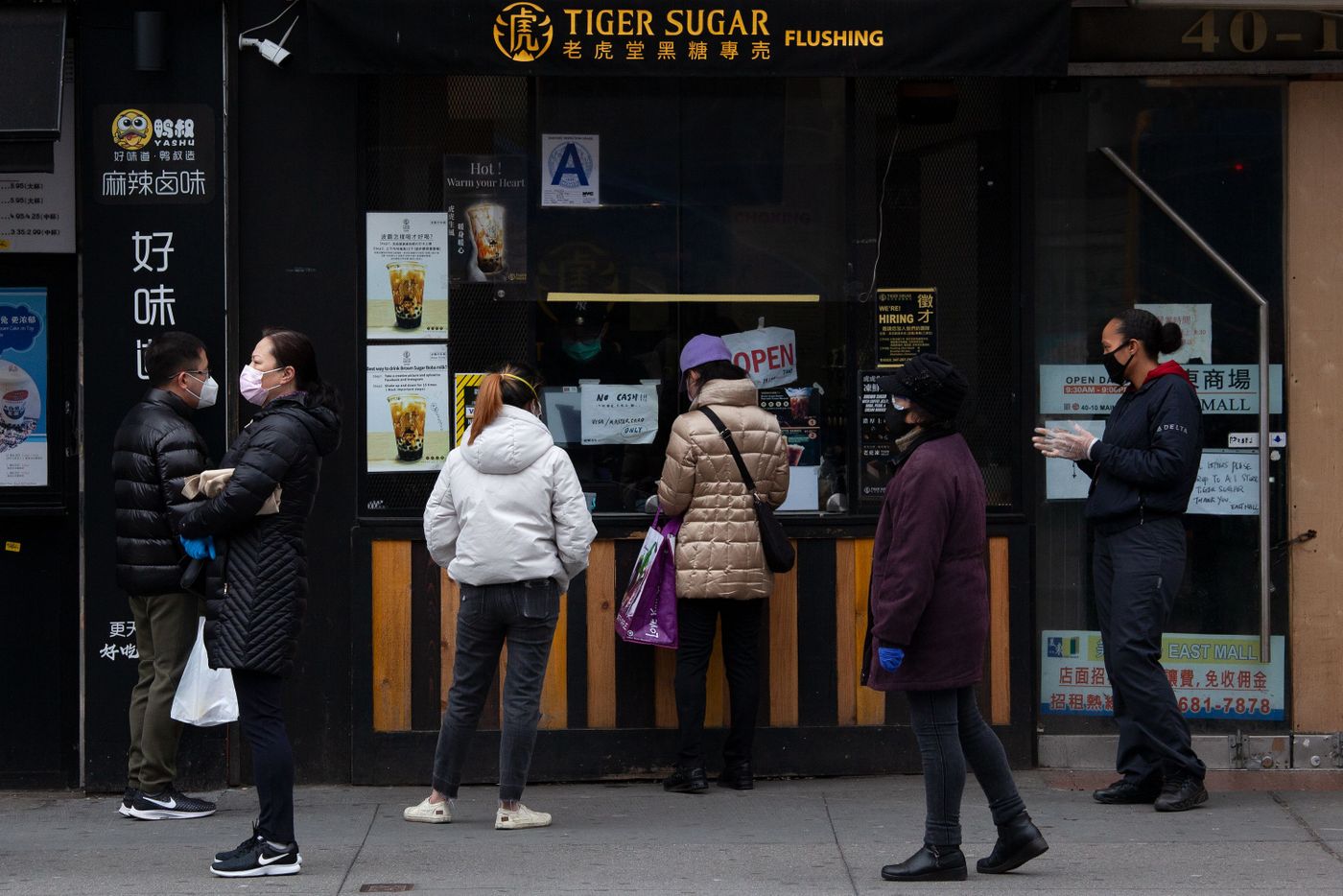
In addition to wearing masks well before Gov. Andrew Cuomo ordered it April 15, she made her husband work from home days before his accounting company required its workers to do so.
In Flushing, locals suspect that early warnings from family and news reports in East Asia, coupled with preventive measures and the shuttering of businesses, lie behind the neighborhood’s low COVID-19 infection rate.
“A lot of Chinese people in New York City were probably more aware of the situation earlier,” said Kezhen Fei, a senior biostatician with PRA Health and Science, a research group.
City data confirms that Asian residents have the lowest rate of non-hospitalized cases.
Warnings from Back ‘Home’
By mid-March, Crystal, who did not want her last name published, and her 67-year old mother had already gotten into the habit of wearing masks and gloves whenever they left their Flushing apartment.
They had already stocked up on Lysol and had a disinfectant routine. The pair even purchased alcohol to make their own hand sanitizer.
Family in Hong Kong had warned Crystal, 30, and her mother to take the virus seriously. It wasn’t just another flu, they said.
Weeks before city and state officials urged people in public to cover their face and nose to curb the spread of COVID-19, it wasn’t uncommon to walk around Flushing and see people in masks, said Crystal.
“We’ve been wearing masks way before the city told us to do face coverings,” she said.
“A lot of the Asian supermarkets that I went into started requiring people to do it in order to enter the supermarket,” she added.
Then a curious thing happened.
Although New York deems grocery stores are essential businesses, allowing them to stay open during the shutdown, Chinese grocery stores in Flushing closed their doors in late March.
Seeing the destruction COVID-19 was wreaking in China, Flushing grocery store managers were already taking precautions by February to protect employees and shoppers by distributing masks at the front of the store or requiring mask wearing, said Peter Tu, the executive director of the Flushing Chinese Business Association.
Stores installed Plexiglass sheets at cash registers to protect workers from aerated germs.
But that wasn’t enough for workers.
“Because the supermarket is so busy, they have to always come in contact with the customer a lot,” Tu said.
“The supermarkets, they don’t want to close. But their employees — they don’t want to work,” said Tu. “So the owner has no choice but to close because people are scared.”
In unison, roughly 20 Chinese grocery stores closed, as did many restaurants and other businesses since it didn’t make economic sense to stay open. The grocery stores only just began opening back up Wednesday with limited hours, Tu said.
Thursday 4/30, the Flushing community changed somewhat. Supermarkets have reopened from 11 am-5pm for a limited time yesterday. Customers are required to wear masks, gloves, and social distance. With good protection measures, we sow an increase in pedestrians on the street. pic.twitter.com/swFiprnSlH
— Peter Tu (@tu_petertu1117) April 30, 2020
Flushing is slowly going back toward activity levels of pre-COVID days. There are more people on the sidewalks and more cars on the streets, locals said.
‘No Other Choice’
The situation couldn’t be more different, once you cross the Grand Central Parkway into Corona.
Angie, a Queens College sophomore and a Corona native, was startled just last week to see people crowding in Flushing Meadows Corona Park, playing soccer without masks. The city closed playgrounds on April 1, but parks remain open.
She also noticed unusually large numbers of homeless people squatting at an abandoned house on Waldron Street, and a wave of workers coming off their shifts, coughing.
“It’s a shit show,” said Angie, who didn’t want her last name used. “Walking around here has my heart really, really heavy.”
Angie believes that she became sick with the virus around mid-March. She couldn’t taste or smell. She was sweating for days and had difficulty breathing.
Two weeks before she started feeling ill, her grandmother showed similar symptoms. Angie’s grandmother collects bottles and delivers newspapers twice a week.
At work, her grandmother’s boss had tested positive for the virus. But that hasn’t stopped her from working.
“I told her, ‘You can’t be around people that are sick,’ but she just doesn’t listen. She has this debt that she’s trying to pay back. She has no other choice,” Angie said.
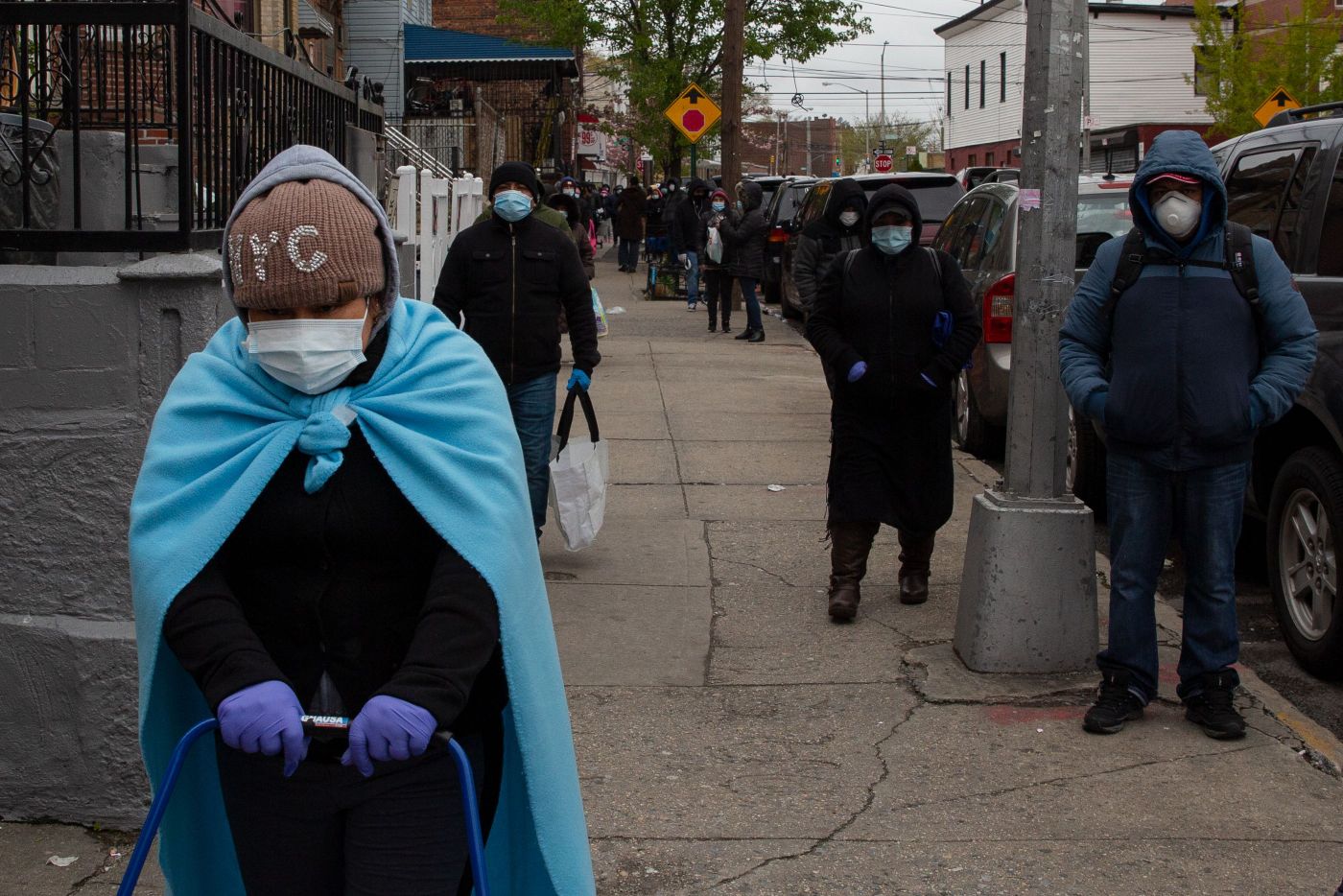
Working from home or forgoing work is “nearly impossible” for many residents of Corona, who because of their immigration status don’t qualify for food stamps and other forms of federal assistance, said Assemblymember Catalina Cruz, who represents the area.
“If you don’t work, you don’t eat or pay rent. Simple,” Cruz said.
Cruz has been operating a food pantry from her Junction Boulevard office, which distributes 2,200 meals a day.
On Wednesday, the line to her office was 10 blocks long, with no signs of abating, she told THE CITY.
Alfredo Herrera, 36, had only ever lived in Corona since he emigrated from Mexico. He worked at restaurants in Manhattan and cared for his family. He didn’t have children of his own, but is an uncle to 15 nephews and nieces.
Aiderith Sanchez said her uncle was a father figure to her and devoted to his family.
“He would always check up on them because he said that that’s what family was about. Checking on one another,” said Sanchez, 20.
Herrera’s mother visited from Mexico for the first time in late February.
“We threw a big birthday party for her and that was the last day we saw him and he was so happy,” Sanchez said. “Who would’ve thought a month and a half later, he’s gone.”
Infected After Hospital Admission
Herrera went to Flushing Hospital Medical Center in early March over chronic stomach issues and was admitted. The hospital quickly became overwhelmed with COVID patients, so visitors were barred.
A few weeks later, Sanchez received a call from the hospital that Herrera had tested positive for the virus, which the family suspects he contracted during his stay. On April 13, the family was notified that Herrera died.
Flushing Hospital Medical Center did not respond to request for a comment.
“We never got to say goodbye. We never got to see his body. We never got to hear his voice. We just got a phone call saying he’s gone, and that’s it,” Sanchez said.
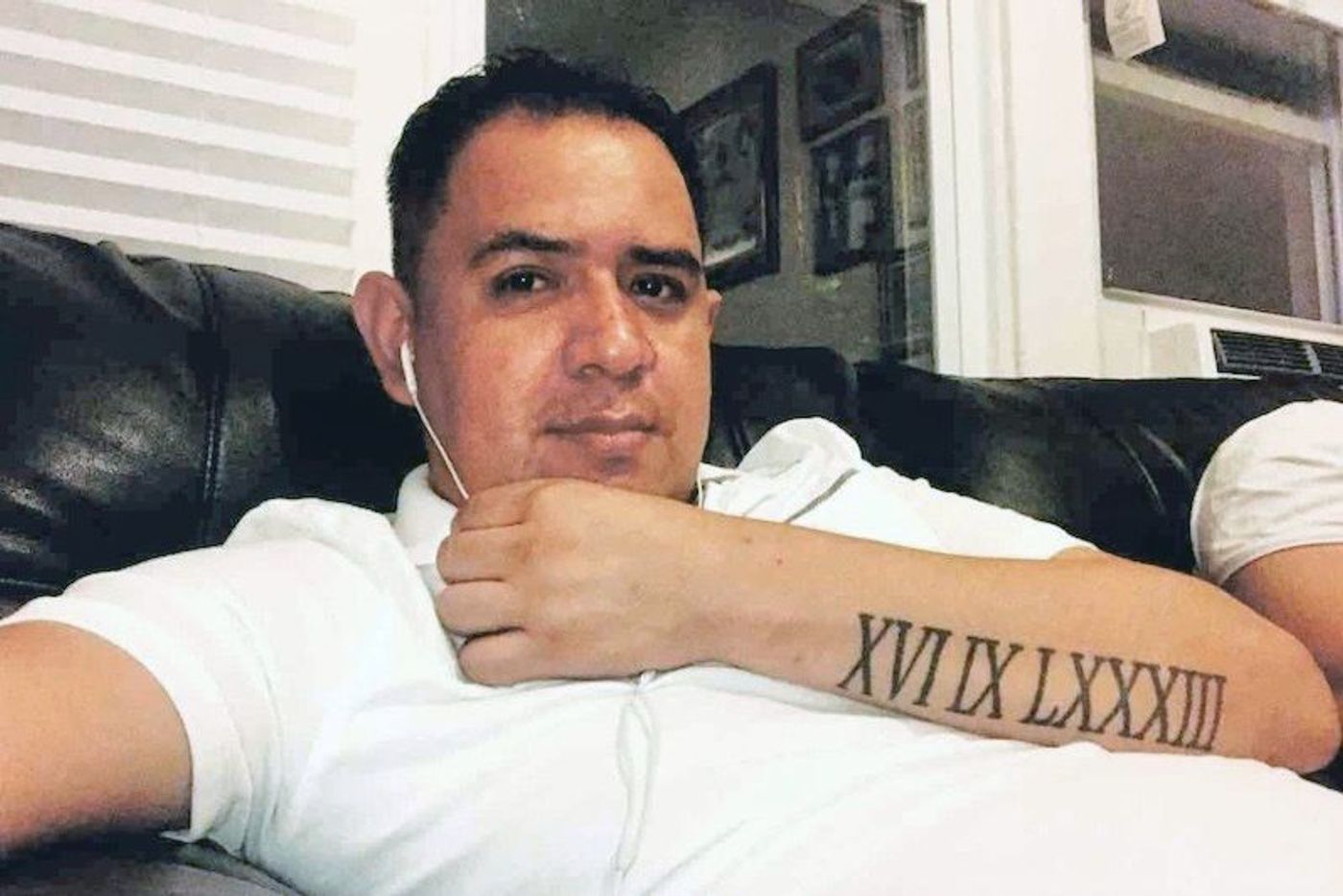
A Siena College poll released Monday found that 52% of Latinos in New York know someone who’s died from the virus, more than any other ethnic group.
Angie realizes the pandemic does not impact people and neighborhoods equally. She knows four acquaintances who passed away, and friends who are living in abusive households fearing for their lives. Meanwhile, others from school joke about how they long for a haircut.
“Being a part of two different worlds, that’s hitting me more now,” said Angie.
“I just want my family to live. I don’t want my friends to die.”
A City Divided
Hispanic and black New Yorkers have died of coronavirus at twice the rate than that of whites and Asians, according to the city Department of Health and Mental Hygiene data as of April 30.
COVID-19’s varied spread among neighborhoods and social groups highlights how segregated New York City is, said Bruce Y. Lee, a professor at the CUNY Graduate School of Public Health & Health Policy.
“If you see differences in the spread of infectious disease among different populations, that’s highlighting the differences in social dynamics. If everyone were mixing with each other homogeneously and equally, then you should see relatively comparable infection rates and we’re not seeing that,” Lee said.
Public health experts point to higher rates of the underlying health conditions among black and Latino New Yorkers that make them as a group more susceptible to death or serious illness from the virus.
“What’s happening right now with both Latino and African Americans is a good illustration of the power of the social determinants, economic, environmental and structural determinants of health. Things like poverty levels, access to food — especially healthy food. And right now, for many, many families it’s just food, any kind of food,” said Dr. Sergio Aguilar-Gaxiola, director of the UC Davis Center for Reducing Health Disparities.
But Asian New Yorkers are not immune to underlying conditions.
Studies show Asians have a higher prevalence of hypertension than Hispanic residents in New York City, the leading health condition coinciding with COVID fatalities — found in 60% of people who died of the virus, according to the state health department.
Black residents had the highest rate of hypertension at 43.5%, followed by Asian (38%), Hispanic (33%) and white residents (27.5%), according to a 2017 U.S. Centers for Disease Control study.
Fei, the author of the study, noted that not getting the virus from the first place is most effective in preventing mortality.
East Asians “were looking into all these strategies early, before the pandemic hit America,” said Fei.
Blaming ‘Density’
As of Thursday, 13,000 city residents were confirmed to have died of COVID — more than in any state in the United States and more than in most countries.
Seeking to explain this extraordinary concentration of fatalities, both Mayor Bill de Blasio and Gov. Andrew Cuomo have both repeatedly cited New York City’s “density.” But places with equal or greater clustering of people have contained the virus’s toll much more successfully than New York City has.
South Korea’s capital city, Seoul — with a 9.1 million population and one of the world’s largest subway systems — has recorded two coronavirus deaths.
San Francisco and other Bay Area counties issued the first shelter-in-place order in the country on March 16, an order that expanded statewide within days. At the time, California had 1,000 confirmed cases.
California reported 1,800 deaths as of Thursday. Meanwhile, New York, which has half the population of California, has 24,000 deaths from the virus — 13 times that of California.
As San Francisco’s policy went into effect, de Blasio contemplated a similar move only to be shot down by Cuomo, who said the mayor didn’t have the authority.
Three days later, after arguing over the semantics, Cuomo announced “New York State on PAUSE,” effectively a shelter-in-place order that started five days after the mayor first floated the idea. By then, New York had confirmed more than 15,000 cases.
For their part, de Blasio and city Health Commissioner Oxiris Barbot spent crucial days in March attempting to reassure New Yorkers to carry on with activities.
“I want to emphasize the risk to New Yorkers of contracting COVID-19 since the beginning has been low,” Barbot testified to the City Council on March 5. “But as we are seeing community transmission, we are really paying very close attention to that. The important thing is for New Yorkers to remain vigilant.”
Asked by Council Speaker Corey Johnson for her current guidance, she said: “We want New Yorkers to use the subway, to go to the theater, to go to gatherings, to go to banquet halls and celebrate life. But we also want New Yorkers to pay attention.”
Even as he urged New Yorkers to avoid physical contact and moved to shut down public gatherings in mid March, de Blasio sent a mixed message by going to the Prospect Park YMCA for a workout.
Asked to comment on the greater toll of the coronavirus in Corona than in Flushing, city Department of Health and Mental Hygiene spokesperson Stephanie Buhle said in a statement: “COVID has disproportionately affected communities of color, particular[ly] Latino and black New Yorkers, exacerbating disparities that have for too long persisted across our city. We are doing everything we can to tackle these disparities head on and remain committed to treating every New Yorker equally.”
Additional reporting by Christine Chung
This story was first reported on May 3, 2020, by THE CITY, an independent, nonprofit news organization dedicated to hard-hitting reporting that serves the people of New York.



